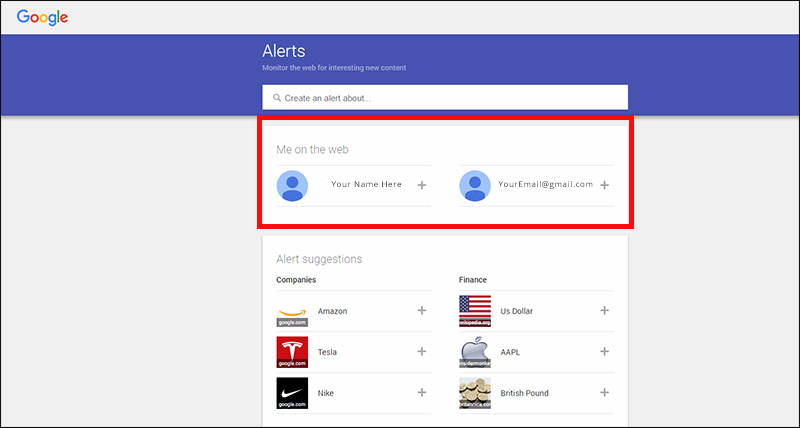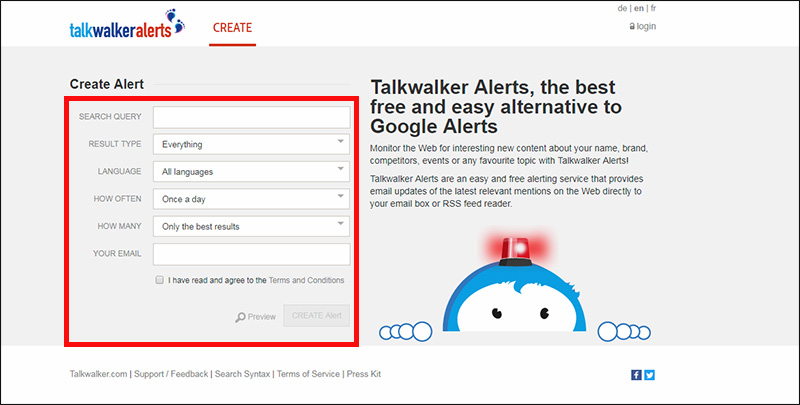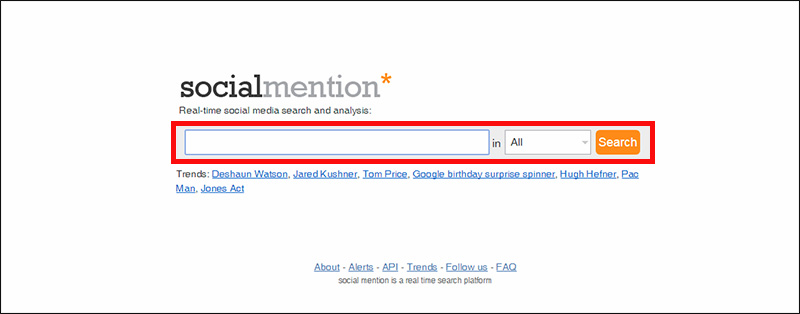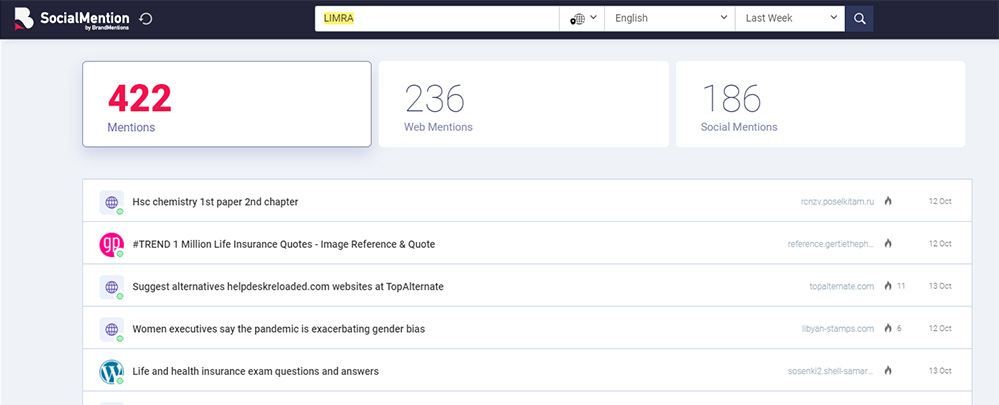
We’ve talked before about how to get feedback from clients and use that feedback in your marketing. But there’s more to promoting your brand than creating content. These days, you also need to think about online reputation management.
Online reputation management is exactly what it sounds like – keeping an eye on mentions of your name or brand that appear online. There are tools out there to help you, and you can do it in a few minutes a day. The real trick is to develop a response strategy for mentions and comments. The good ones are easy – thank the commenter and acknowledge their compliment gracefully! The bad ones are a little trickier. Should you respond? Should you correct them if they're wrong? We’ll go over the pros and cons of both strategies below.
Step 1: Set a Baseline
Your brand isn’t what you say it is, it’s what Google says it is.
The first step in developing your online reputation management strategy is to gather information. What do clients and prospects see when they search for you online? Google your name (or your agency name) and take note of what shows up on the first page.
If you have a website and social media profiles, these should appear on the first page of results. This is exactly what you want – profiles and content properties you control. Luckily, Google gives a lot of weight to exact name matches. When someone searches for your brand, Google knows social media and your brand website are probably what people want to see. The more of these you have, the more likely you are to own your first page of results.
If you don’t have results that belong to you on the first page, it may be a good idea to start a blog, create a website with your name or brand in the URL, and create social media profiles. In this case, the best defense is a good offense. It’s also smart branding. If a prospect is deciding whether to work with you, having a consistent online presence tells them you’re both established and accessible.
Thinking Ahead
It’s a good idea to reserve your name/handle on social media networks even if you don’t plan on using them. Let’s say your agency is called the “Jones Insurance Agency.” What happens when another Jones Insurance Agency grabs the handle @JonesInsuranceAgency on Instagram…and people reply to their posts with complaints? You can’t expect your clients and prospects to realize they aren’t you. The best course of action is to create accounts at all popular social media sites to reserve your desired brand name. If nothing else, fill out the profile information and tell users where else to reach you.
Step 2: Track Mentions
Now that you know what’s already out there, how do you keep track of new mentions? The easiest way to do this is to have that information brought to you using the following tools.
- Google Alerts. You can have Google search the web, including blogs and news forums, for new mentions of your name. Add as many subjects or keywords as you want. This means you can monitor brands, products, competitors, partners, or carriers. Choose how often you get alerts, and where Google sends your notifications (email, your Google profile, etc.). Best of all, it’s free!

- Talkwalker. This free tool is an alternative to Google Alerts. It notifies you when your search term appears in news, blogs, discussions, or anywhere online. Talkwalker will email you results once a day or once a week.

- Social Mention. This free tool will scan social networks to see where and how often your search terms are mentioned. It also gives you interesting analytics, like how people feel about that search term (positive, negative, neutral) based on the context in which they're mentioned.

- Social Mention by BrandMentions. This free tool lets you search for any company or product name and see a list of mentions online and in social media. You can select a time range to search, as well as a language (helpful if you have multi-lingual clients!). Make sure you select "English" if you only want English-language results. Once you pull up results, you can use the search bar up top to run another search - the system will pull up potential matches as you start typing to make the process easier.

- Hootsuite. You might be familiar with this tool as social media management software. But you can also create new streams in your dashboard that track a particular subject or keyword, like your name. You can get started for free with up to three social media networks. If you upgrade to the Pro plan ($19/month at this writing), you get up to 50 social profiles, analytics, and the ability to assign mentions to a team member for replies. There’s also a newly released ReviewTrackers app that will track your reviews on Google and Facebook.

- There are a handful of reputation management and social media monitoring tools that cost a bit more. We won’t cover them in depth here, but check them out if you want features like social media metrics, reach analysis, sentiment analysis, and more. Expect to pay at least $20/month.
Step 3: Develop Your Response Strategy
Positive Mentions
The best way to handle positive mentions and reviews is with a big “thank you.” Someone took time out of their busy day to say something good about you! That deserves more than a simple like – it deserves a reply. Thank the commenter by name, and add something personal about how that comment helps you or your agency. If you feel it’s appropriate, you can take further action – retweet, share, or send a private message to the commenter to ask if you can use their comment as a testimonial.
Here are a few sample replies to get you started:
- Hey, [commenter name]! Thanks for your kind words. You really made my day!
- Thanks, [commenter name]! Always glad to help.
- [Commenter name], thanks for the shout out. I’ll pass your compliment on to [staff member] – they’ll be thrilled!
- Thanks for taking the time to leave us a note, [commenter name]. It was a pleasure working with you!
Negative Mentions
The first step in dealing with negative mentions is to realize they happen to everyone. We've all had bad days. Sometimes a customer will take that frustration out on you. Expect a few negative mentions or reviews to trickle in, and have a plan for dealing with them. As long as you're striving to provide the best possible customer experience, you're headed in the right direction.
Evaluate the Situation
When you get a negative mention, don’t respond right away. Take a minute to figure out what kind of negative mention you’re dealing with:
- Is the negative comment valid? Is there something you could have done better? Did you make a mistake? If so, make a plan to fix it. Share the feedback with any staff members who need to know, and explain how to keep the situation from happening again. Then, tell the commenter you’ve taken steps to fix the problem.
- Is there a gray area? This happens when something beyond your control goes wrong. For example, let's say an application got lost in the mail. Maybe a client wasn’t able to sign it before their long vacation, which led to an angry comment on social media. In situations like this, acknowledge their frustration and offer a solution if you can.
- Is the comment incorrect? In this case, acknowledge the commenter and, if possible, gently correct them. This is easier if you can steer them toward a resource that corrects their statement or offers more information.
- Is the comment rude or off-topic? If it appears on a content property you own, like your website or your Facebook page, you can delete it. If it appears elsewhere (Google reviews, Yelp, etc.), check to see if it violates that site's terms of service. If so, you can ask the site to remove it. If you can’t do either of those things, use your best judgment on whether to ignore it or respond with a simple “Thank you for your feedback.”
Craft Your Response
In general, you want to acknowledge the comment and offer a resolution. Templates can help keep your responses consistent. Be sure to modify these templates for each comment to keep your responses sincere.
Start by acknowledging the comment:
- Thanks for commenting, [name]. I understand how frustrating it is when [nature of incident]. I’ve sent you a private message with a few possible solutions. Feel free to reach out when you’re ready.
- Thanks for the feedback. I’ve already [describe change you made to keep mistake from happening again]. I appreciate you taking the time to let me know what happened.
- Thanks for your feedback, [commenter name/handle].
- Thank you for sharing your point of view.
Finish by offering a resolution:
- Propose a solution. How can you help? If the commenter got turned down by a carrier, for example, they still need coverage. Are there alternatives? Even if it's a referral to someone else, presenting a solution puts you in a positive light.
- Clarify misinformation – but only if you have documentation. We all know arguing with someone over the internet is futile. However, if a comment includes incorrect information, you can correct it by pointing to a reputable source. If a reviewer says no one should buy an annuity, for example, point to a source like the Government Accountability Office report recommending annuities. Remember, you’re replying to this comment, but you’re also setting the stage for future prospects who stumble onto this interaction.
- Point the way forward. It’s a good idea to close with an invitation. Are you available for further discussion offline? Do you have more ideas about how to solve their problem? If not, you can simply end by saying you hope you can be of service in the future.
Step 4: Make It Part of Your Routine
One-third of all customer complaints are never answered - and most of them are on social media.
Chances are you have office tasks you complete once a day. Make brand monitoring one of them.
If you’re a small shop, this won’t take much time at all. It may be as easy as checking your email for Google Alerts. No alerts? Then you’re already done for the day.
While reputation management isn’t something you want to take over your day, it’s also something you can’t ignore. Put yourself in the customer’s shoes. If you had a bad experience and posted about it, you’d probably feel better if the company acknowledged your post within 24 hours. The people who post, whether it’s positive or negative, just want to be heard. Let them know you're listening.
There’s a good reason to devote time to reputation management. According to Convince and Covert, answering a social media complaint increases customer advocacy by as much as 25%. Not answering a complaint decreases consumer advocacy by as much as 50%. Plus, every response you make could be seen by a future prospect. Imagine your next client is researching you online…what do you want them to see?
That’s our look at online reputation management!
Have you ever gotten a negative comment or review? How did you handle it? What do you do at an agency level in terms of checking for new comments, complaints, or reviews? Tell us in the comments!
